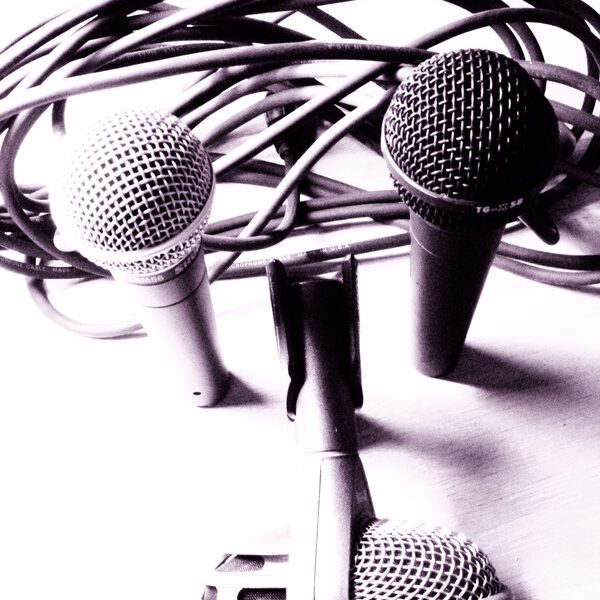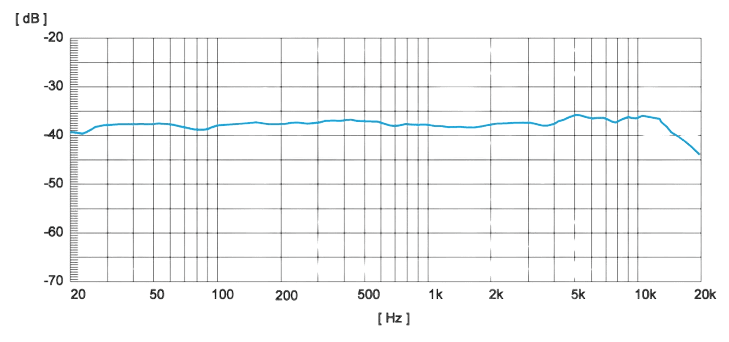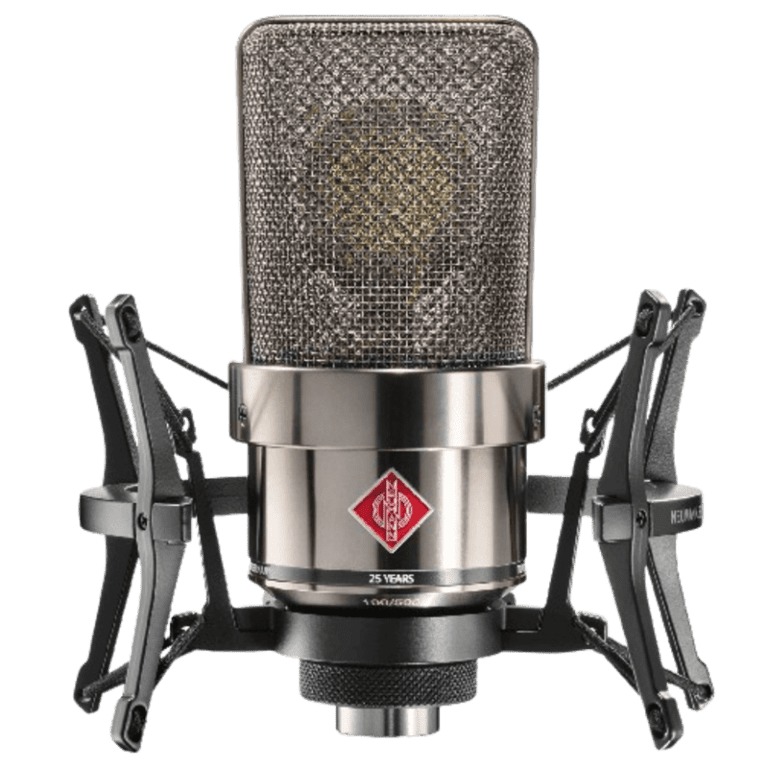4 Best Mic For Home Recording Studio
In this post i will reveal my 4 best mic for home recording studio. When setting up a home recording studio, one of the most important pieces of equipment you’ll need is a high-quality microphone. A good mic for home recording studio can make all the difference in the sound quality of your recordings.
With so many options available on the market, choosing the best mic for your needs can be overwhelming. In this blog post, we’ll explore the different types of microphones available, the role of polar patterns in recording, essential features to look for, top contenders for the best home studio microphone, how to navigate the price versus quality dilemma, how to integrate the microphone into your home studio setup, and tips for caring for your microphone to ensure longevity.
Understanding the Types of Microphones Available

Navigating the landscape of microphones for a home recording studio reveals a rich tapestry of options, each with its distinct sonic character and utility. At the core of this assortment lie three primary types: dynamic, condenser, and ribbon microphones, each serving a unique purpose and catering to different recording environments and requirements.
Dynamic microphones stand as the workhorses in the recording and live sound arenas. Their robust construction and ability to handle high sound pressure levels without distortion make them an invaluable asset for capturing the raw energy of electric guitars, drums, and live vocals. The inherent simplicity and reliability of dynamic mics render them a quintessential choice for beginners and professionals alike, seeking quality without complexity.
On the other end of the spectrum, condenser microphones offer a level of sensitivity and sonic detail that dynamic microphones can’t match. Their ability to capture the subtle nuances of vocal performances and acoustic instruments with precision and clarity makes them a staple in any studio aiming for professional-grade recordings. This heightened sensitivity is a double-edged sword, requiring a controlled recording environment to truly shine.
Ribbon microphones, with their vintage allure and smooth, natural sound reproduction, excel in capturing the essence of vocals and stringed instruments. Their figure-8 polar pattern and warm, rounded sound profile make them an artist’s ally in creating recordings with a classic feel. Though delicate in nature, modern advancements have made ribbon mics more robust and accessible to home studio enthusiasts seeking to infuse their recordings with the warmth of yesteryear.
Each microphone type brings its unique flavor to the recording process, offering a palette from which to paint sonic landscapes. The choice between them hinges on understanding the specific demands of the recording at hand and the acoustic character one aims to achieve.
The Role of Polar Patterns in Recording
In the intricate dance of capturing sound within a home recording studio, understanding the role of polar patterns becomes paramount. These patterns, essentially the roadmap of a microphone’s sensitivity to sound from various directions, are critical in sculpting the audio landscape of your recordings. They dictate how sound waves are picked up, allowing for strategic placement and usage based on the sonic environment and the desired outcome.
Consider the cardioid pattern, named for its heart-shaped sensitivity field, which focuses on sound sources directly in front of the microphone while minimizing ambient noise. This makes it an excellent choice for isolating vocals or individual instruments, offering clarity and focus in a mix. Conversely, the omnidirectional pattern captures sound with equal sensitivity from all directions, embracing the environment and creating a sense of space and dimension in recordings. This can be ideal for capturing the ambiance of a room or recording live performances where the interaction between the performers and their space is a key element of the sound.
Then there’s the figure-8 pattern, with its dual sensitivity fronts, capturing sound from both the front and the back while rejecting noise from the sides. This polar pattern shines in situations where a blend of direct sound and ambient noise is desired, or for recording two sound sources simultaneously, such as a duet or an interview setting.
Understanding these patterns and their applications not only empowers you to make informed decisions regarding microphone placement but also enables you to harness the full potential of your microphone, tailoring your recordings to achieve the desired sonic character. The strategic use of polar patterns can dramatically enhance the quality of your home studio productions, turning technical knowledge into creative power.
Essential Features to Look For

In the quest to find the perfect mic for your home recording studio, attention to detail in its features is pivotal. The landscape of microphone specifications can seem dense, but focusing on a few key attributes, you can navigate this terrain with precision.
Frequency response is your first beacon; a microphone that boasts a broad and flat frequency response ensures that your recordings capture the true essence of the sound, from the deepest bass to the highest treble, without coloration. Sensitivity is another crucial factor, as it determines the mic’s ability to register subtle nuances and quiet performances, bringing an authentic and dynamic quality to your recordings.
Equally important is the maximum sound pressure level (SPL) a microphone can handle. This is especially vital when recording powerful sound sources such as drums or amplified instruments, ensuring that the microphone captures the intensity of the performance without distortion or clipping. Lastly, self-noise, or the microphone’s inherent noise floor, can be a deciding factor. The lower the self-noise, the cleaner and more pristine your recordings will be, particularly for soft and nuanced acoustic pieces.
By prioritizing these features, you align your studio with the standards of professional recording environments. This foundation not only elevates the quality of your projects but also expands your creative possibilities, allowing you to experiment and capture sounds in their most authentic form. Remember, the goal is to find a microphone that complements the unique characteristics of your studio and enhances the integrity of your recordings.
4 Best Mic For Home Recording Studio
Navigating through the myriad of microphones available for home studios uncovers a spectrum of devices each claiming to be the quintessential recording partner. Among the vast sea of options, certain models rise to the occasion, distinguishing themselves through performance, reliability, and sonic fidelity. These include the robust Shure SM7B, known for its rich, dynamic range ideal for both vocals and instruments, and the versatile Audio-Technica AT2020, offering a pristine condenser experience at an accessible price point.
The AKG C214 stands out for its exceptional clarity and detail, capturing the nuances of performances with ease, making it a favorite for acoustic and vocal recordings. Meanwhile, the Neumann TLM 103 is revered in professional circles for its unparalleled precision and depth, bringing a touch of studio magic into the home setting.
Each of these contenders has carved a niche for themselves, becoming synonymous with quality and reliability in home recording studio environments. Their unique attributes cater to a broad spectrum of recording needs, from intimate vocal sessions to vibrant instrumentals, ensuring that every creator can find the perfect microphone match for their artistic vision.
Choosing among these top contenders involves a deep dive into the specific qualities that make each microphone stand out. Factors such as the sonic character, adaptability to different recording situations, and compatibility with the acoustics of your home studio play pivotal roles in the selection process. It’s about finding the microphone that not only captures sound with clarity and depth but also resonates with the essence of your creative output. In this journey, the aim is not merely to record, but to translate vision into audible reality, with a microphone that acts as the faithful conduit for your artistic expression.
Navigating the Price Versus Quality Dilemma
In the realm of equipping a home recording studio, the conundrum of balancing price and quality when selecting a microphone is a challenge many face. The temptation to veer towards more economically priced models is understandable, especially when budgets are tight. However, the axiom “you get what you pay for” holds significant weight in the world of audio recording. High-quality microphones often come with a steeper price tag but offer invaluable benefits such as superior sound fidelity, enhanced durability, and a greater ability to capture the nuanced textures of your recordings.
The key to navigating this dilemma lies in a thoughtful assessment of your recording needs and long-term goals. Ask yourself: What types of sounds will you primarily record? How important is versatility to your creative process? Will the microphone need to withstand frequent use, or will it be used more sparingly? These considerations can help prioritize which features are non-negotiable and where compromises can be made without unduly sacrificing quality.
When budget constraints are a significant factor, consider the prospect of investing in a microphone that provides the best balance between cost and quality, rather than opting for the lowest-priced option. Some microphones offer exceptional performance at mid-range prices, embodying a sweet spot for home studio artists seeking both affordability and quality. Additionally, exploring the used market can uncover opportunities to acquire higher-tier microphones at reduced prices.
Ultimately, investing in a quality microphone is investing in the sound and integrity of your recordings. It’s about making an informed choice that aligns with both your artistic ambitions and your financial reality, ensuring that every recording carries the depth and clarity that your music deserves.
Integrating the Microphone into Your Home Studio Setup
The successful integration of a microphone into your home recording studio transcends mere placement; it is about creating harmony between the microphone and its environment to capture the essence of sound with precision. Begin by establishing the optimal positioning of the microphone relative to the sound source, an endeavor that may require experimentation. Factors such as the type of instrument or voice being recorded and the acoustics of the room play pivotal roles in determining this position. Utilizing accessories like pop filters and shock mounts not only mitigates unwanted sounds such as plosives and mechanical vibrations but also safeguards the integrity of your recording.
Further refinement of your setup involves the judicious use of high-quality cables and connectors, which are essential for preserving the fidelity of the sound signal from microphone to interface. The investment in a superior microphone preamp cannot be overstressed; it acts as the conduit through which the raw essence of your sound is enhanced and brought to life, imbuing your recordings with a professional sheen.
Experimentation with microphone placement cannot be overstated—it is a process of discovery that reveals how minor adjustments can have profound effects on the quality of the captured audio. Whether adjusting the angle of the microphone to capture the full-bodied resonance of an acoustic guitar or finding the sweet spot that allows a vocal performance to shine, this iterative process is central to achieving recordings that resonate with clarity and depth.
Engaging with your setup in this manner, with an eye toward both technical precision and creative exploration, sets the stage for a recording environment where every nuance of sound is faithfully captured, allowing your artistic vision to flourish.
Caring for Your Microphone to Ensure Longevity
The longevity of a microphone in a home recording studio setting hinges on the meticulousness of its upkeep. Ensuring your microphone remains in prime condition involves a regimen of regular maintenance and cautious handling. When not in active use, safeguard your investment by housing it in a protective case, shielding it from the environmental adversaries of dust and moisture. Regular cleansing with a gentle brush or a soft, dry cloth keeps particulate matter at bay, preserving the microphone’s sensitivity and response.
Environmental factors such as extreme temperatures and humidity levels are detrimental to a microphone’s well-being; hence, maintaining a stable and controlled environment is crucial. The utilization of a windscreen or pop filter during vocal recording sessions is not merely a technique to enhance sound clarity but also serves as a barrier, protecting the delicate diaphragm from the erosive effects of moisture. Adopting these practices not only extends the operational lifespan of your microphone but also ensures consistent performance, allowing you to capture the essence of your art with unwavering quality.
Conclusion
intended use, recording environment, and personal preferences. Whether opting for a versatile condenser microphone for capturing vocals and acoustic instruments with precision, or a dynamic microphone for handling high sound pressure levels and minimizing background noise, there are numerous options available to suit different needs.
Ultimately, the best microphone choice is one that aligns with the specific requirements of the recording project and enhances the overall quality of the audio recordings. Investing time in research, testing, and understanding one’s unique recording setup, aspiring home studio owners can find the perfect microphone that elevates their sound production to new heights. Remember to select a quality mic for a home studio so you do not compromise your, remember your quality will give you the results.





